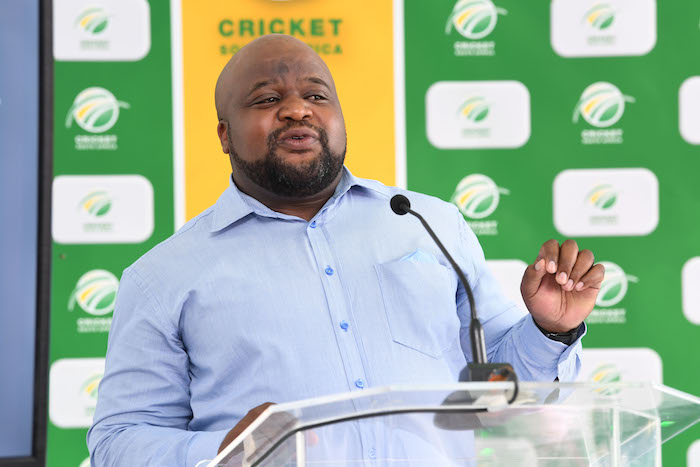The recent Cricket South Africa School Weeks featured an increased number of youngsters produced from the Standard Bank Regional Performance Centres (RPC) as well as the Community Hubs.
Compared to the 266 players chosen to represent their various provinces during the 2018 tournaments, that number improved to 337 RPC/Hubs players for the weeks that took place in December 2019. This equates to 34% of the 988 budding players that took the field and an increase from last year’s 27%.
This was particularly evident during the recent edition of the Momentum U15 Boys Week hosted in East London between 5-9 December.
The RPCs and Hubs programme, through the valued support of Standard Bank, plays a key role in identifying players from previously disadvantaged areas to be a part of an organised, high-performance environment within their communities and structures. This has the aim of reshaping the cricketing landscape and change lives through developing the raw skills of the kids from non-traditional feeder systems.
The Boys U15 Week forms an integral part of the CSA development pipeline, particularly as it is the first opportunity to witness the talents of the latest crop that high-school cricket has to offer. This is after the players have made the transition from primary-school cricket at U13 level.
New magazine issue: Why De Kock must bat at four
Over the five days of action in East London, among the 195 players taking part, 57 players were developed from the nine RPCs. This is up from 43 in the previous year. In the total number of players at the week, 124 were players of colour (Black African, Coloured, Indian).
This is a statistic that excites acting CSA Cricket Pathways Manager Edward Khoza, as the Player Performance Plan (PPP), which was implemented in 2017, begins to bear fruit. The PPP is focused on narrowing the performance gap between players from different socio-economic backgrounds through various interventions, including education, medical and equipment.
‘It’s quite exciting that the guys who were part of the initial process in 2017, when they were U13 at the time, to see them being selected for their provincial teams and putting up meaningful performances.
‘Strategically, in 2016, we said the fundamental issue was to ensure that the players get quality of opportunity, for us to gauge whether these guys are up to this level and whether they can perform,’ Khoza added.
When analysing the two disciplines, batting and bowling, the performances and contributions throughout the inter-provincial tournament are considered, including the number of black African batsmen who batted in the top six and the number of overs sent down by the bowlers.
In 2019, there were 110 top-six innings played by the batters from the RPC/Hubs programme, an improvement of 14% from 2018. In those innings, 1,500 runs were scored. That included impressive performances from the likes of Shelton Ngobeni, who scored 88 against Northern Cape for Limpopo.
In the bowling department, there were 767 overs bowled by players of colour from the RPC/Hubs programmes, with an increase of 44 overs bowled by players of Indian origin.
The average economy rate at the week was 3.8 runs per over and out of the 50 players that bowled with a better rate, 20 of them honed their skills at the development centres.
Western Province’s Nathier Sambo claimed the only five-wicket haul for the RPC players, taking outstanding figures of 5-6 against Eastern Province on day three.
‘For the players to get quality of opportunity, they needed defined roles and responsibilities,’ Khoza continued.
‘Significantly, from a PPP perspective, we’ve been under pressure as CSA to produce players of colour that are batsmen because predominantly, they would get selected as bowlers.
‘This change doesn’t start at a franchise or national level; you need to start working on those pathways at the earliest level to begin to see change. When we started this process, people used to just tick boxes by putting these players in those positions, without adequately preparing the players.
‘But since then, we’ve began putting pressure on the coaches and with the assistance of the boards, we appointed coaches that can help identify and look at the interventions needed for the players to ensure they are prepared when selected for these squads.
‘Slowly, but surely, we are starting to see the results of having continuous monitoring and interventions, so that one day, by the time a player doesn’t make it to the top it should only come back to talent and not due to other circumstances or the lack of support given.
‘We are not at the stage where we are satisfied but it is progress and we will reap the rewards down the line,’ he concluded.
Photo: Lee Warren/Gallo Images







